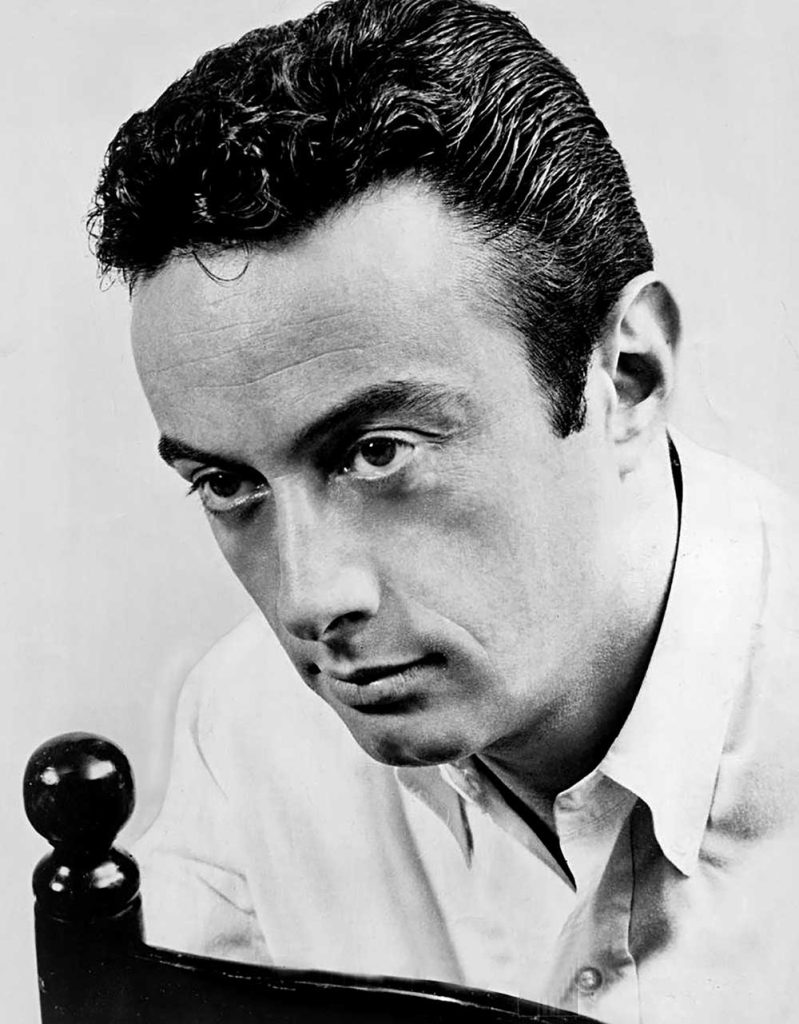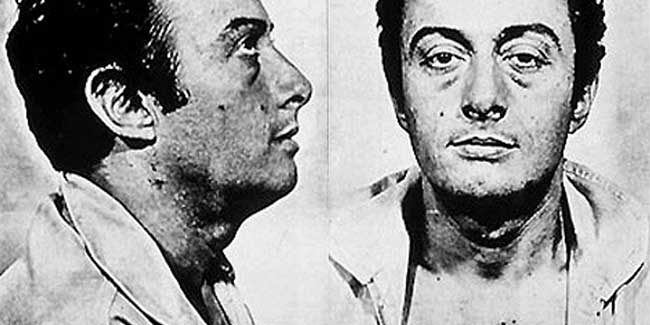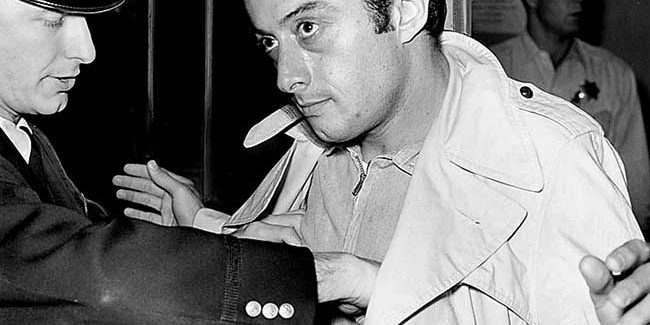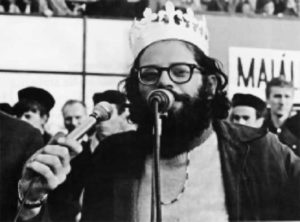

Stand-up Comedian, Social Critic & Satirist
Lenny Bruce
Lenny Bruce (1925 – 1966) was an American comedian whose dark humour and biting satire frequently landed him in trouble with the authorities of the day. He has been the subject of multiple documentaries and biopics, and his column in Playboy magazine was serialised posthumously as How to Talk Dirty and Influence People.
Born Leonard Alfred Schneider, Bruce experienced a childhood full of disruption. His parents, a physiotherapist and a dancer, divorced when he was young. In the resulting turmoil, Bruce was shuttled from relative to relative before dropping out of high school and joining the navy aged 16 during World War II. Shortly after the war ended, he was discharged from the armed forces as he claimed to have ‘homosexual obsessions’. Although he was initially discharged dishonourably, this was overturned and his discharge from the Navy was recorded as honourable. Bruce is generally assumed to have invented these obsessions to get out of the armed forces, but evidently thoroughly convinced his commanding officers.
Bruce’s mother was by various turns a dancer, comedian, and performer; she instilled in him a love of performing too. His early gigs were in strip clubs, compering and corralling drunken audiences. He also found success as an impressionist, winning the TV talent competition Talent Scouts in 1949.
In 1947, Bruce married the stripper Honey Harlow (born Harriet Jolliff). He attempted to get her out of the adult entertainment industry by acting as her manager, though she still worked as a dancer. In his attempts to get his wife away from stripping, Bruce created many hare-brained money-making schemes. Most notably, he impersonated a priest and claimed to be raising money for a leper colony, for which he was arrested for fraud, though ultimately found not guilty as some of the funds did go to the leper colony.

Harlow also featured in some of the indie films Bruce made in the early 1950s, including Dance Hall Racket. Their marriage was tumultuous, with incidents fuelled by heavy drug use. They had one daughter together, named Kitty, who was born in 1955. Although they divorced in 1957, they maintained an on-and-off relationship up until Bruce’s death.
As Bruce’s comedy career progressed, he slotted into the countercultural scene of the 1950s and 60s. In some ways, there were many similarities between his comedic style and Beat poetry, which was also coming to prominence at the time. The stream-of-consciousness, semi-improvised material certainly holds up poetically today.
However, what would prove to be his downfall was not the style of his material, but the content. Word spread quickly and Bruce soon became known as one of the most controversial comedians of his day.
By the late 1950s, Bruce had been termed a ‘sick’ comedian (practising what one might see nowadays termed ‘edgy’ or ‘shock’ comedy). However, he himself resisted the term, considering himself a satirist (Bruce was also the originator of the oft-misquoted quip ‘Satire is tragedy plus time’), who used humour to challenge societal norms. This was obvious in the subjects he generally took aim at, such as organised religion, societal views on sex and drugs, and the government. For example:
Every day people are straying away from the church and going back to God.
It was this material – and particularly the foul language used within – that would ultimately get him in trouble with the authorities. In 1961, he was arrested for obscenity after a performance at San Francisco’s Jazz Workshop. The subsequent trial ended in acquittal, but unfortunately would not by any means be the last obscenity trial for Lenny Bruce.
He was arrested for obscenity three times in relatively quick succession following performances in California and Illinois. The California trial – covering arrests made after performances at The Troubadour and The Unicorn – ended in a mistrial. The jury of the Illinois trial retuned a guilty verdict; however, Bruce remained free while he appealed the result.
The culmination of these courtroom battles was his trial in New York, over an obscenity charge he received for his performance at Café Au Go Go. Plain-clothes police officers attended his performances with a tape recorder, the recordings from which were used as evidence against him. Dozens of prominent figures of the day came to his defence, including Allen Ginsberg and Woody Allen, and a petition protesting his arrest received 80 signatures from poets, novelists, publishers, and other cultural figures.
Some of these figures also testified in his defence at the trial itself. These included Dorothy Kilgallen, a respected New York theatre critic; Forrest Johnson, a Presbyterian minister who had seen Bruce perform at Café Au Go Go; and two university professors. These witnesses were chosen as they were not associated with the countercultural movement and it was felt that their testimony would therefore be more persuasive to the court.
However, this was unfortunately not to be. The trial was adjourned at one point due to Bruce suffering from a bout of pleurisy, and during his stay in hospital he worked himself into a frenzy – reading law books cover to cover to try and help his own case. Sadly, his mental health was deteriorating while he physically recovered from the illness.
By the end of the trial, Bruce was in bad shape. He begged to be allowed to testify, or at least for the court to hear his act; he was greatly upset by the plain-clothes officer’s recital of his material, complaining, “I'm going to be judged by his bad timing, his ego, his garbled language.”[1] At the sentencing, he spoke for just over an hour in a rambling defense of his material, which the court did not find convincing.

Bruce was sentenced to four months in a workhouse; however, he would never serve the time. While he was released on bail during the appeals process, he died of a morphine overdose in the bathroom of his home on 3rd August, 1966. This was attributed both to the stress of the trial and to the catastrophic loss of his career: blacklisted from venues across the country due to venue owners’ fear of prosecution, Bruce could no longer perform as a comedian.
In many ways, Bruce was simply placed at an unlucky point in legal history. Obscenity prosecutions turned almost entirely on the whims of the presiding judges, and it was not until Cohen v California (1971) that the Supreme Court decided that the presence of swearing was not sufficient to restrict an individual’s free speech.
Lenny Bruce is to date the only comedian to have been prosecuted and tried under American obscenity laws. His case is still held up by champions of free speech as an example of state infringement of freedom of speech and freedom of expression.
In 2003, Bruce was posthumously pardoned by the Governor of New York following a campaign by people who knew him, including his ex-wife, and other performers and writers who understood the significance of his trial and conviction, and the impact it had on comedians and other public figures in terms of free speech.
